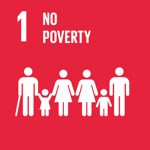Maize resistance to pests and diseases in the South American tropics
 Mexico
Mexico
 Argentina
Argentina
 Bolivia
Bolivia
 Chile
Chile
 Colombia
Colombia
 Ecuador
Ecuador
 Venezuela
Venezuela
Executive Summary
Based on the expert knowledge on biotic stresses with economic effects on corn production in South American countries, it was resolved that to solve these problems, base populations should be developed, with white and yellow endosperm, with genetic resistance to the identified pests and diseases. A program of recurrent selection of S1s was followed, generating lines that were planted in different localities with high incidence of the identified stresses.
With the information generated in the different localities, we started to obtain the base populations by selecting the best S1 families from each nursery, which were recombined to form synthetics resistant to each of the different stresses. The F1 seed was advanced to F2 using a mixture of seed from each of the different synthetics. The F2 seed from the different synthetics developed in the different years was included in agronomic trials in different locations. C2 or C3 breeding cycles were generated from 10 white or yellow base populations in addition to 466 synthetics with resistance to different health problems. The increased seed production and the future release of resistant varieties by the consortium's breeding programs will allow increasing maize yields in regions with endemic health problems.
The technological solution
The technological solution consists of improved maize genotypes and varieties, resistant to different pathogens affecting the crop. The reference production sector is that of family agriculture in tropical environments in South America.
Results
- Information from the agronomic trials was transferred to the collaborators for the evaluation and selection of the most appropriate germplasm and its possible release. Additional seed from several of the evaluated synthetics was also transferred for multiplication and subsequent release.
- The populations generated by the C2 and C3 breeding cycles showed resistance to stunting, sugarcane mosaic, phaeosphaery, budding and polysora, in addition to resistance to the different health problems initially identified as the project's justification.
- An important additional result is that the disease initially called "mosaic" corresponded to sugarcane mosaic (SCMV).
- In general, with the distribution of corn germplasm with great genetic variation, new health problems were identified in the different collaborating countries, including the complex of Cercospora species present in Peru and Colombia.
- It was demonstrated that genotypes can accumulate resistance to different stresses.
- The release of the resistant germplasm obtained is in the process of legalization in several countries.
Beneficiaries
The direct beneficiaries are research groups in the region working on maize breeding for resistance to different pests and diseases, which now have base populations for the selection of improved varieties.
The indirect or subsequent beneficiaries are the farmers who will have varieties resistant to pests and diseases after the release of these genotypes. In terms of potential impacts, greater productivity is expected from family farming in the region.
Sustainable Development Goals

Participating Organizations
Executor
- Centro Internacional de Mejoramiento de Maíz y Trio (CIMMYT) - México
Co-executor
- Instituto Nacional de Tecnología Agropecuaria (INTA) - Argentina
- IBTA - Bolivia
- International Center for Tropical Agriculture (CIAT) - Colombia
- Corporación Colombiana de Investigación Agropecuaria (CORPOICA) - Colombia
- Instituto Nacional de Investigaciones Agropecuarias (INIAP) - Ecuador
- Instituto Nacional de Investigaciones Agrícolas (INIA) - Venezuela
- Instituto de Investigaciones Agropecuarias (INIA) - Chile




